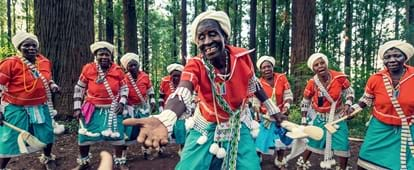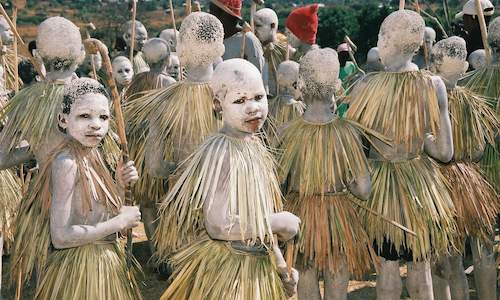South African Culture Today Fundamentals Explained
South African Culture Today Fundamentals Explained
Blog Article
South African Culture Today Things To Know Before You Get This
Table of ContentsSouth African Culture Today for BeginnersThe Ultimate Guide To South African Culture TodayGetting The South African Culture Today To WorkUnknown Facts About South African Culture TodayAll about South African Culture TodayThe smart Trick of South African Culture Today That Nobody is Discussing
This follows with singing and drum pounding. The new bride and bridegroom after that consult with the elders and speak about the relevance of their union. An issue of importance in Zambian villages is the passing away of loved ones. All members of the town placed cash, effort and time with each other for the interment of the deceased.Songs and dancing is a really essential facet of the Zambian society. The numerous tribal devices have their very own dancing forms; however, makishi is usual among all tribes.
All about South African Culture Today
When it involves songs, drums are made use of one of the most, with a variety of drumming ceremonies. In Zambia, bulk of the people are Christian; Protestant and Roman Catholic. There are small groups of Muslims and Hindus, with the rest adhering to local indigenous tribal ideas.

South African heritage and culture is greatly diverse, and consists of several teams of individuals who each have their own traditions and ideas. Having such a variety of individuals and societies is what makes South Africa so unique. In real feeling of the phrase, we are a rainbow nation.
Making it the 7th on the listing of nations with the most Portuguese individuals in it outside of Portugal. Portuguese is not only a culture, however it is also a language and a race. Portuguese people stem from the nation of Portugal in Europe, nonetheless, due to Portugal (like numerous other countries in Europe) exploring the globe and conquering various other nations throughout the 15th 20th centuries, South Africa has what we call Portuguese South African's living in it.
South African Culture Today Fundamentals Explained
Among the noticeable functions of the topography is a plateau that covers virtually 2 thirds of the center of the nation. The plateau complicated increases towards the southeast, where it culminates in the Drakensberg range, component of a cliff that divides the plateau from the coastal locations. The Drakensburg consists of Sparkling wine Castle, the highest height in the country.
The area north of the Witwatersrand, called the bushveld, slopes downward from east to west toward the Limpopo River, which creates the global boundary. The western area of the plateau, the middleveld, additionally descends in the direction of the west and differs in elevation in between the highveld and bushveld. In between the Drakensburg and the eastern and southerly coast, the land comes down to the sea.
Nearer the shore there is a low-lying level called the eastern lowveld. Southwest of the plateau the nation comes to be gradually extra arid, paving the way to the hostile desert of the Great Karroo, approached the east by the reduced, better watered plateau of the Little Karroo. Dividing the dry southern interior from the sandy coastal of the southerly coastline and West Cape is one more range, the Langeberg.
Some Known Incorrect Statements About South African Culture Today
The country's racially, ethnically, and politically separated history has actually produced national and subnational icons my sources that still work as icons of the country, and others signs that are accepted just by specific teams. The monoliths to white inhabitant conquest and political prominence, such as the Afrikaner Voortrekker ("pioneer") Monolith in Pretoria and the Rhodes Monument recognizing the British colonial realm builder and Cape head of state Cecil Rhodes, remain sectarian symbols.
The initial modern citizens were the San ("bushman") hunter-gatherers and the Khoi ("Hottentot") peoples, who rounded up livestock (South African culture today). The San might have been existing for thousands of years and left proof of their existence in countless ancient cavern paintings ("rock art"). Bantu-speaking clans that were the ancestors of the Nguni (today's amaZulu, amaXhosa, amaSwazi, and vaTsonga peoples) and Tswana-Sotho language teams (today's Batswana and Southern and Northern Basotho) migrated below east Africa as early as the fifteenth century

Both former republics of the Orange Free State and Transvaal (South African Republic) were established by Afrikaner inhabitants who beat and dispossessed the Basotho and Batswana. Lesotho would certainly have been by force integrated into the Orange Free State without the extension of British security in 1869. The ultimate marriage of the country resulted from the South African Battle (18991902) in between the British and the 2 Afrikaner republics, which minimized the country to ruin at the visit here beginning of the twentieth century.
Afrikaners historically considered themselves the just real South Africans and, while providing full citizenship to all residents of European descent, denied that condition to people of shade till the autonomous shift of 1994. British South Africans keep a sense of social and social link to Great Britain without damaging their identification as South Africans.
Unknown Facts About South African Culture Today
The diversity and fragmentation within ethnic groups and the balance of stress between those groups throughout the twentieth century stopped interethnic civil dispute. While intergroup tensions over resources, entitlements, and political dominance remain, those conflicts are as most likely to pit Zulu against Zulu as Zulu versus Xhosa or African against Afrikaner.
From colonial India, British sellers and administrators brought the curved steel ornamental roofings and slim lace work columns that still symbolize the verandas of cottages arounds and cities throughout the nation. Holy places add an essential building element also in the tiniest towns. Along with the soaring steeples and traditional stonework of Afrikaans Dutch Reformed churches, Anglican churches, synagogues, mosques, and Hindu temples provide range to the spiritual building scene.

Butchering and the developing of traditional grain beer are essential in securing the participation and goodwill of the forefathers that are taken into consideration the guardians of good luck, prosperity, and well-being. Indian communities maintain their indigenous cooking customs and apply them on Islamic and Hindu ritual and ceremonial celebrations. Afrikaners and Coloured individuals collect at weekends and special occasions at multifamily barbecues called braais, where area bonds are reinforced.
Due to the fact that this was the key financial business of both black Africans and white homesteaders, conflict in between those teams centered on the belongings of grazing land and livestock. In 1867, the biggest ruby deposits in the world were uncovered at Kimberley in the west main location. The riches from those areas helped finance the exploitation of the best gold reef worldwide, which was found on additional hints the Witwatersrand in 1886.
Top Guidelines Of South African Culture Today
This brought about misunderstandings and deliberate misstatement in the dealings of white inhabitants and federal government officials with African principals during the early american duration (South African culture today). In the establishment of African books, some facets of common and primarily "tribal count on" land period were preserved, and even in white country locations, forms of common period were still practiced in areas with African communities
After the autonomous transformation of 1994, programs for land restitution, redistribution, and reform were set up, yet progress has actually been slow-moving. The white minority still controls eighty percent of the land. In the wake of agricultural land intrusions in Zimbabwe, the Division of Land Matters has promised to speed land redistribution.
Report this page